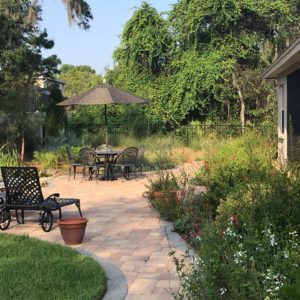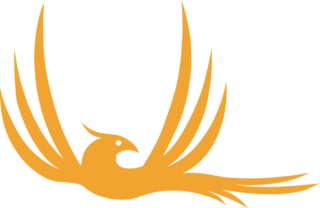 If you have a self-sustaining landscape with lots of native wildflowers and grasses, there is a certain time a good cleaning is necessary for the landscape to function properly. In order to obtain the best results, there are a few things to note about the ecosystems we are trying to mimic. In Florida, most of our native wildflowers and grasses go through their reproductive cycle in the fall, which is why Florida’s natural areas have so much color during that time of year. This means a high percentage of new seedlings come up in the winter and early spring. Secondly, many of Florida’s ecosystems receive a natural pruning and cleaning by a regular fire regiment.
If you have a self-sustaining landscape with lots of native wildflowers and grasses, there is a certain time a good cleaning is necessary for the landscape to function properly. In order to obtain the best results, there are a few things to note about the ecosystems we are trying to mimic. In Florida, most of our native wildflowers and grasses go through their reproductive cycle in the fall, which is why Florida’s natural areas have so much color during that time of year. This means a high percentage of new seedlings come up in the winter and early spring. Secondly, many of Florida’s ecosystems receive a natural pruning and cleaning by a regular fire regiment.
When we maintain our wildflower gardens, it is important to create a condition where plants can complete their reproductive cycle, have room to grow, and also meet our aesthetic goals. To do that we resist all temptation to cut off brown stems from our desired plants in late fall and early winter so seeds mature properly. If seed heads are cut off prematurely, the reproductive cycle will stop, and no new seedlings will come up to replace plants that die off naturally.
As far as how much to cut off, we think of a cleanup as similar to what fire does to the landscape. Fire takes everything off herbaceous plants to ground level. This gives room for seedlings to grow, and also cleans off built up detritus from older plants so they have room to grow new sprouts from the ground. The only exception is a mechanical cleaning which will not kill off very young seedlings like fire will; it can be done a little earlier than when lightning usually starts fires in Florida, which is from April to June. A good cleanup in mid-February through March is perfectly safe.
Once we know all wildflowers and grasses have set mature seed, we like to mow all the meadows (areas with wildflowers and grasses) and trim all shrubs, palms, and trees only as needed to give them their best aesthetic appearance. We then look for the presence of wildflower and desirable grass seedlings, remove any unwanted weeds, and then apply a thin layer of pine straw to give the garden the best possible appearance. Areas that contain only older wildflowers, shrubs and trees get a heavier layer of pine straw to slow down weed growth. Areas where seedlings are present get the thinnest layer or not much at all until they have grown a little higher, and then more pine straw may be applied.
Happy gardening, and remember how you garden has a huge impact on the overall health of Florida’s ecosystems.
Author: Troy Springer is the principal authority at Springer Environmental Services Inc., a Plant City based landscaping service that specializes in natural ecosystems including Florida native plants. Springer Environmental Services offers design, installation, maintenance, and supply. Environmentally safe landscape and maintenance techniques.
The Mission at Springer Environmental Services:
We are committed to building and maintaining landscapes with low-impact, environmentally-friendly practices. Our specialty is native plants— the wide range of plants that have grown naturally in Florida for thousands of years. By using natives, we’re able to reduce or eliminate harmful practices like chemical spraying and extensive irrigation. With every native Florida plant we use, we’re also building habitat and providing food for our local creatures! We’ve found a way to create beautiful gardens and landscapes while preserving— not displacing— Florida’s natural beauty.

